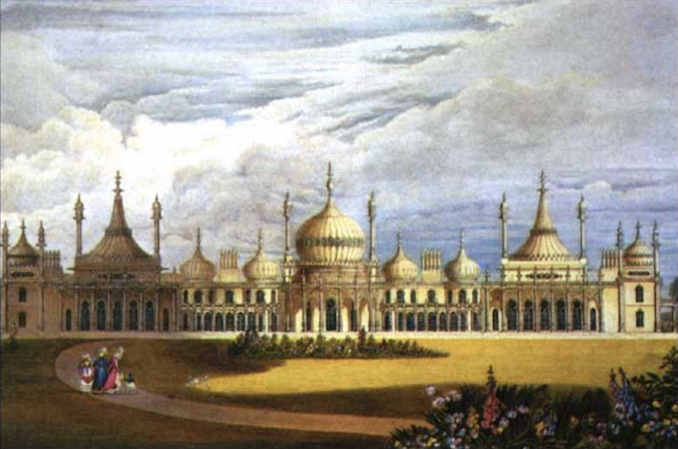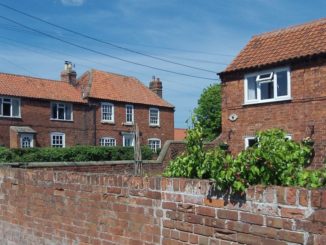
This Is My England,
© 2022 Newspapers.com
There is one date in history that no Englishman can escape remembering — Battle of Hastings, 1066.
So being quite close to the place we thought we would go and see how that famous battlefield looks now, 884 years afterwards.
And there we made our first mistake. For the Battle of Hastings, as any intelligent schoolboy can tell you — or can he? — was not fought at Hastings at all but on the long hill at Senlac, a full seven miles inland.
It was here that William, marching cautiously up from Pevensey, found Harold and his weary but indomitable Saxons firmly entrenched behind their stockade.
The battle lasted about seven and a half hours — one of the shortest and most decisive battles in history.
And when you consider that bloody October afternoon’s work in the light of more recent events it is surprising, really, how little man’s military ingenuity has varied in a thousand years.
Forget the highly-coloured war correspondence of the period for a moment and what have you got?
On one side an orthodox military mind, believing that defence was the best method of attack; on the other a highly flexible mind, gambling on the element of surprise and prepared to back it up with the use of a brand-new “secret weapon” — fast-moving, hard-hitting cavalry.
And behind it all, lurking in the shadows, a well-organised, well-paid “fifth column,” sowing the seeds of defeat long before the battle was fought.
How close this particular history came to repeating itself in 1940 we shall probably never know.
And, standing here on the green mound which was once the English right flank, it is exciting to speculate what might have happened.
If, for instance, Harold had given ground instead of holding stubbornly on till too late.
If he had made a running fight of it, drawing William on into the formidable Weald of Kent, cutting him up piecemeal, until the English reserves were between him and the sea.
One thing is certain. The whole course of European history would have been changed and in all probability I should not have been writing this.
So perhaps it is as well that things turned out as they did that tragic afternoon, Harold fighting to the last, surrounded by his housecarles, and Edith Swan-neck begging on her knees for her husband’s mutilated body.
A garish little monument stands on the spot where tradition says Harold’s body was found; it marks, too, the place where once stood the high altar of the Abbey Church which the Conqueror built here to appease his conscience.
For William was a pious gangster. He would have fitted naturally into the more violent side of Chicago life 20 years ago. For one thing he had, they tell us, a perfect passion for attending elaborate funerals.
The Abbey is a picturesque ruin now; it was demolished by order of another royal rough-neck, Henry VIII.
But it seems almost as if William built on cursed ground; for just as he did not live to see it built (his horse fell on him and killed him while he was burning down Mantes one quiet week-end) so the man who took it from the monks — Sir Anthony Browne — died before the great Tudor mansion he had planned on the spot could be completed.
There used to be an old guide here who was something of a character. His discourse never varied throughout the years; but it was his final curtain-line for which you really paid the price of admission:
“‘Arold lookin’ Hup caught the Harrow Hin ‘is Heye and coll-upsed.”
But he retired some years ago. His successor is a saturnine young man with a waggish sense of humour. He sums up each different audience shrewdly.
“Notice the walls, ladies and gentlemen,” he was telling one coach-load when we joined him. “Three feet thick. You couldn’t hear your neighbours eating celery through that!”
But there was irony in his humour when he showed us his scraps of Roman pottery, cemented down where they would be safe from the furtive attentions of souvenir-hunters.
He told me something I never knew before: why these old monastery walls have lasted so well.
Apparently those twelfth-century masons mixed their mortar with lime and crushed sea fossils, which in time hardened into cement; and they were careful to expose the mortar on only the inside of the wall, where the weather could not get at it.
Before we left he showed us a splendid avenue of lime trees which were planted in honour of Queen Anne’s coronation. And now Queen Anne is dead; but her lime trees are in bloom…
The modern building which has replaced the old Abbot’s House is now a girls’ school; its windows look straight down across the battlefields and over to the gentle slopes of Telham, where William first caught sight of his enemy.
Those girls ought to be well up in history; I wonder if they are?
From Hastings to Bournemouth the whole South Coast is really one vast, elongated holiday camp; over a hundred miles of it, and all of them — St. Leonards, Bexhill, Eastbourne, Worthing, Littlehampton, Bognor — as like as highly polished peas.
One day some social historian with a sense of humour will write a book explaining the extraordinary similarity of English seaside architecture.
No doubt he will reason why, for instance, every self-respecting English pier pavilion must look as much as possible like the Taj Mahal; and why sober English boarding houses have such ornate, almost raffish, exteriors.
I suppose, if you go back far enough, you can pin the blame on a certain Doctor Richard Russell, who opened for business opposite what is now the Palace Pier at Brighton a little less than two centuries ago.
It is fascinating to think that had it not been for Dr Russell, it is very likely that there would have been no Tower at Blackpool, while Brighton might still have been a pleasant little fishing village instead of the thriving metropolis it is today, with a rateable value of almost two million pounds.
It was Russell — the original “Doctor Brighton” — who conceived the unorthodox idea of salt-water baths. Publication of his book on the “curative properties” of seawater brought the famous and the fashionable flocking to his house.
But even Dr. Russell could not have brought it off without the help of the Prince. If the doctor set the example it was the Prince who set the fashion.
Because the Prince liked to spend his weekends at Brighton, a holiday by the sea became a British institution.
And if you must blame anyone for the rake-hellish appearance of “Seaview” blame the Prince Regent and his favourite architect, John Nash.
For between them they were responsible for that Arabesque nightmare the Royal Pavilion, the first sight of which caused Sydney Smith to comment:
“The dome of St Pauls must have come down to Brighton and pupped.”

Views of the Royal Pavilion,
John Nash – Public domain
The Royal Pavilion is much in demand these days for congresses and conferences and I suppose more wishful thinking will go on under those fantastic domes and cupolas this summer than anywhere else in England.
But just the same, the Royal Pavilion is looking very clean and spruce just now (and I should like to have the contract for cleaning all associated glass).
And you can say the same for every pier pavilion, every winter garden every “pier view” and “Rockhaven” and “Balmoral” from Bexhill to Weymouth.
This has been the biggest spring-clean in history. On the day I saw it all it looked like some super-energetic publicity officer had been putting a bit of extra polish on the sea and splashing a final coat of whitewash on Beachy Head.
Reproduced with permission
© 2022 Newspapers.com
Jerry F 2023



